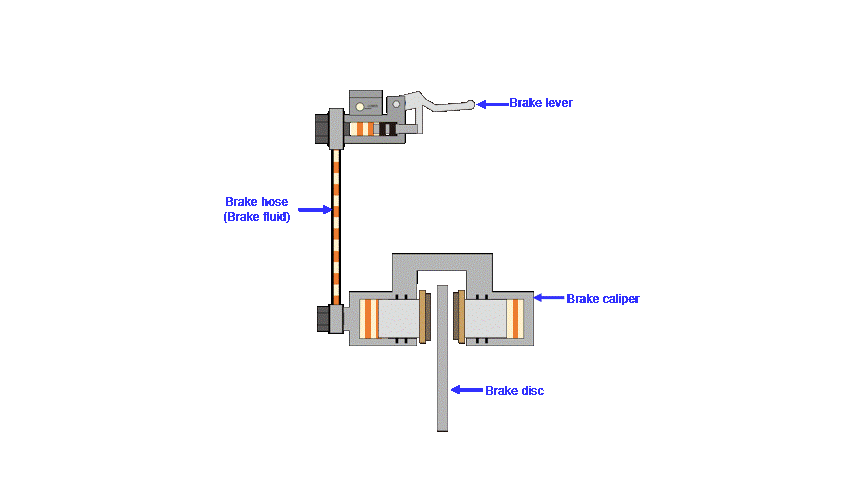Brakes can save your life.
In this article, we'll tell you about how brake fluid keeps
your brakes working smoothly.
Hello, everyone!
This article will take a look at the role of brake fluid.
In previous articles, we presented information about the importance of periodic brake inspection, talking about how to check your brake fluid on a daily basis and what items dealerships inspect when checking your brakes.
In this article, we will take a deep dive into the role of brake fluid and the impact of its deterioration over time.
A motor vehicle's braking mechanism is essential for saving your life and the lives of those around you.
Let's gain a greater understanding of the role of brake fluid, as well as the importance of its regular replacement.
1.The Role of Brake Fluid
Brake fluid is hydraulic fluid, used in hydraulic braking mechanisms.
The brake lever (or pedal) may be something you use without thinking every day, but are you really aware of how it is able to stop your bike?
As shown in the figure below, the force exerted by squeezing the brake lever is transferred to the brake caliper via brake fluid, clamping on the brake disc.
The brake disc then slows the rotation of the tire, stopping the bike.

Not just any hydraulic fluid can be used as brake fluid.
In a hydraulic brake mechanism, the brake disc is sandwiched between brake pads, so the area around the brake becomes hot due to frictional heat.
Even under harsh conditions like these, brake fluid must reliably transmit action from the brake lever (pedal) to the calipers and maintain brake functionality. That means brake fluid must be able to provide the following performance.
・High boiling temperature
・Does not damage metal or rubber parts
・Viscosity must be within an appropriate range even at high and low temperatures
・Appropriate lubricating performance
Brake fluid performance is classified by DOT standards, and is classified according to the fluid's most important quality, its boiling point.
| Grade | Dry | Wet (at 3.5% Absorption) | Components |
|---|---|---|---|
| DOT-3 | 205°C or higher | 140°C or higher | Glycol ethers |
| DOT-4 | 230°C or higher | 155°C or higher | Glycol ethers |
2.Incidents from Deteriorated Brake Fluid
Next, we will look at why regular brake fluid replacement is necessary.
Brake fluid gradually absorbs moisture from the air.
As this moisture is absorbed, the boiling point of brake fluid decreases, which may cause the brake fluid to boil and vaporize.
Vaporization creates the same conditions as when air is added to the brake fluid, resulting in poor braking.
(This is called the vapor lock phenomenon)

Absorption of moisture can also cause rust to form in the brake piping.

When brake fluid is in storage or in use, there is no way to check and see if it has absorbed moisture.
Normally, when brake fluid is used, heat transmitted from the brakes and other compounding factors gradually cause the brake fluid to turn from dark yellow to brown, and the performance of the brake fluid gradually deteriorates.
Some people may judge the deterioration of brake fluid over time by looking at the color of the fluid.
However, as shown in the figure below, water added to new brake fluid does not discolor the brake fluid.

Since the decline in brake fluid performance cannot be determined simply by looking at the color of the brake fluid, it is best to periodically replace the fluid to prevent issues.
3.Summary
We hope this article was helpful in showing the role of brake fluid and incidents that can occur as it deteriorates over time.
Periodic inspections and replacements are the best way to prevent issues.
Here, we hope that providing information about what could happen without replacement will help you be better aware of periodic inspection and replacement as you enjoy your motorcycle life.
Stay on top of your periodic inspections and replacements for better safety and peace of mind!
We hope this article will help guide you ensure you can enjoy a safe and long-lasting life for your Honda bike.
Share this article with your friends using the icons below!
